Anything that we do all day every day will have an effect on our bodies. This is true whether you sit at a desk all day or spend hours doing a hobby that you enjoy (after years as an osteopath, I can guess pretty accurately which instruments patients play without them telling me!)
The most important thing that you can do to minimise the physical effects of long hours spent at a desk, is to ensure that your work station is set up correctly for you. To do this, check out my other blogs on Top 10 Desk Posture Tips and Setting Up Your Desk to Work From Home.
Anything that requires you to adopt the same positions regularly, whether that is your job or a hobby that you enjoy often, will inevitably have an impact on your body. The key is to know the stretches that will help you to come out of those positions and prevent your body compensating long-term.
Most of us in the UK spend on average 40 hours a week sat at a desk. This could lead to shortening through the hip flexors, the muscles at the front of the shoulder girdle and poor function through the upper back – which doesn’t have to move at all in a seated position. Over time, this could have a knock-on effect on the way that these areas are functioning and could lead lower back, shoulder and neck pain.
Below you will find a short sequence of stretches which will stretch the muscles which tend to be tight in those with desk-based occupations and exercises to mobilise the upper back. If you do these regularly, your body will have less chance to adapt to a classic “desk based posture” and retain better function, reducing your chances of developing neck and back pain.
Mid-Scalene Sternocleidomastoid Stretch
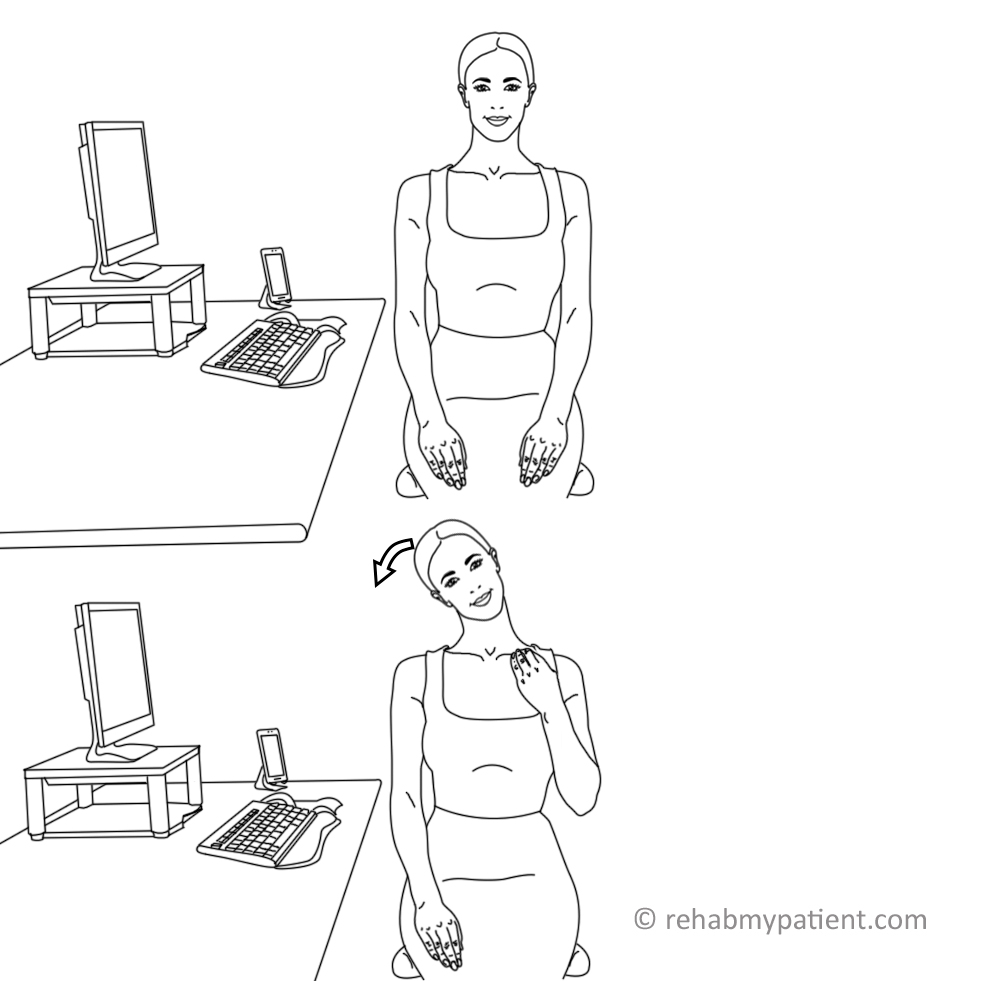
Hook your fingers above your collar bone, and gently side-bend your neck to the opposite side. Hold the stretch. You should feel the stretch at the front/side of your neck. This exercise will help improve mobility to your neck. If you prefer, you can also do this one with your arms crossed in front of you (the same applies to the stretch below)
Hold for 10
Video: http://youtu.be/8by8-cpjPJU
Anterior Scalene Stretch
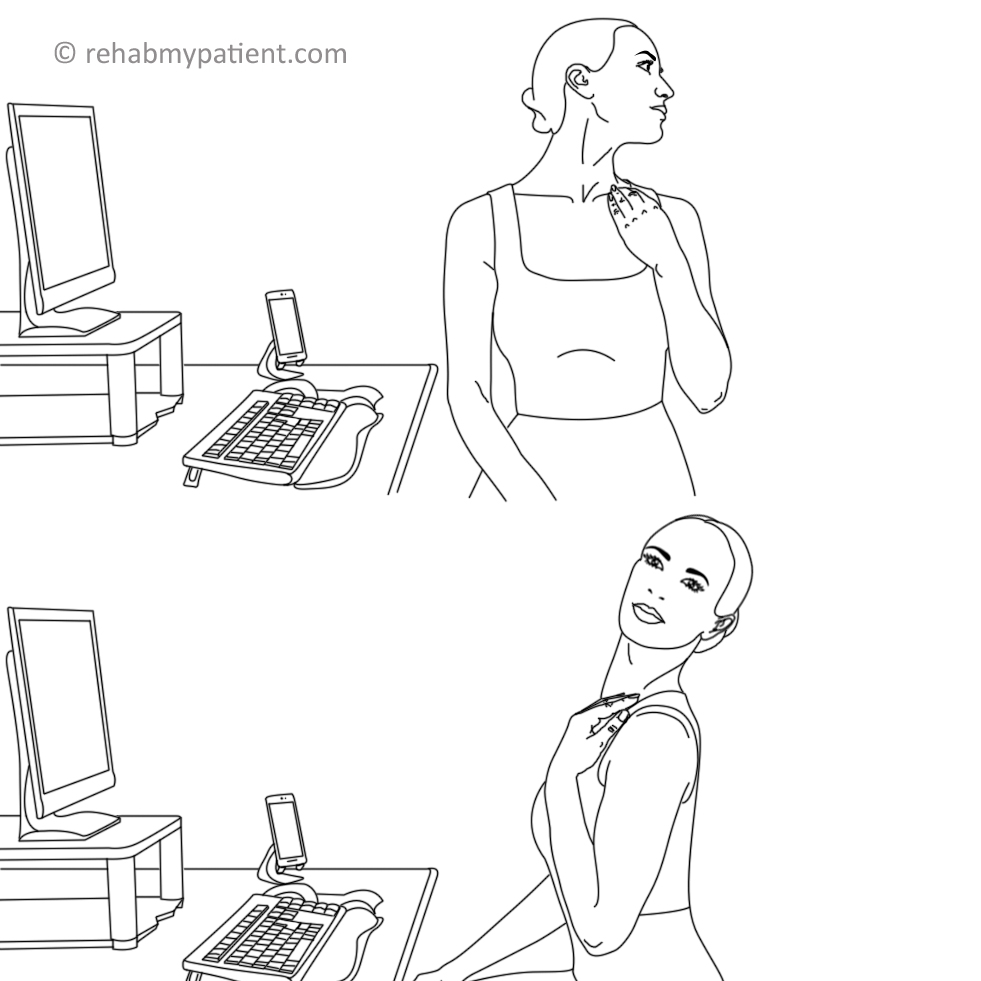
Hook your fingers above your collar bone, and gently rotate your neck to the same side, then extend your neck backwards. You should feel the stretch at the front of your neck under your fingers. This stretches the anterior scalene muscle.
Hold for 10
Video: http://youtu.be/934rrJiJrmA
Pec Stretch
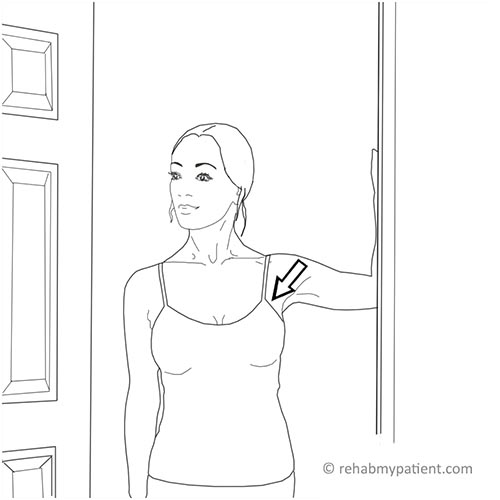
Bend your elbow 90 degrees, and rest your forearm against a door frame or wall, with your fingers pointing towards the ceiling. Lean forwards creating a stretch across your upper arm, front shoulder and slightly into your chest. This exercise stretches the pectoral muscle.
Hold for 10
Video: http://youtu.be/OHtz3C0v9lM
Fig of Eight Articulation
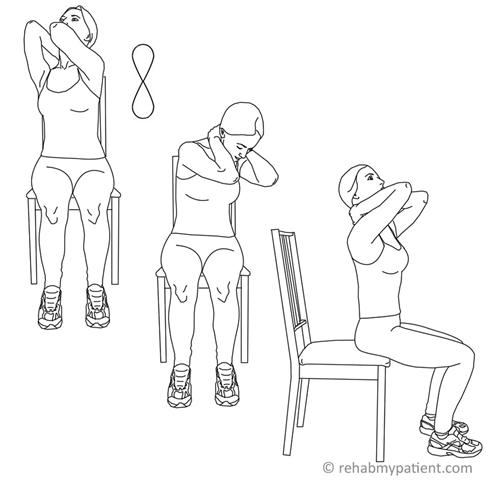
Place your hands behind your neck, and bring your elbows together. Now “draw” a figure of eight with your elbows (which will also move your back). This excellent mobility exercise will improve the mobility in your spine, act as a useful warm up before sport, and get you more flexible. Do not be alarmed if you hear a few pops and clicks coming from the spine.
Hold for 10
Video: http://youtu.be/3_rbcQMl7Io
Glute Stretch Sitting
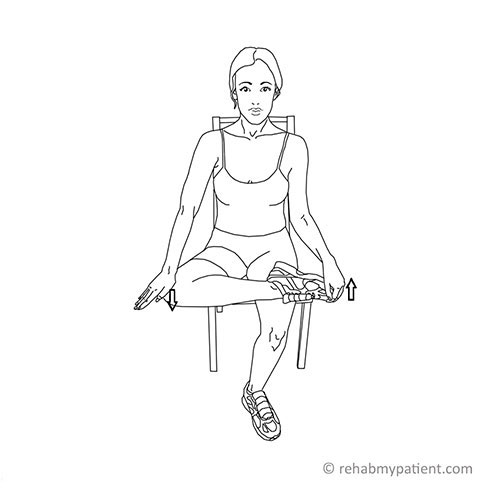
Place your ankle across your opposite knee, sit up straight and pull your ankle upwards while pushing downwards on your knee (of the side being stretched). You will feel a stretch in your bottom. To increase this stretch, lean gently forwards whilst keeping your back completely straight.
Hold for 10
Video: http://youtu.be/6CDnxMFSq7k
Lunge
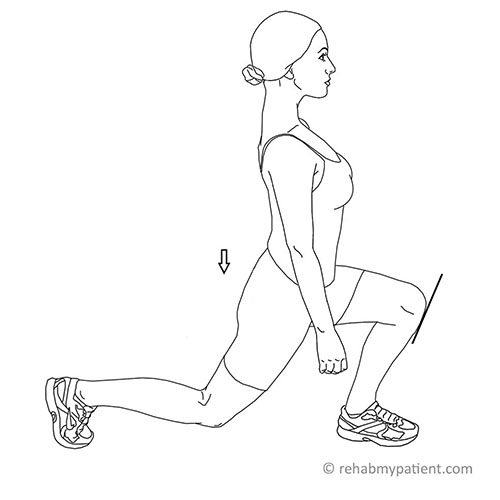
Take a step forwards, and bend the front knee past the vertical. The back knee drops towards the floor. Always keep good alignment: your knee should stay over the 2nd ray of your foot, and never let your knee drop inwards. Only go as far as feels comfortable. This is a lower limb strengthening exercise.
Hold for 10
Video: http://youtu.be/xASFze7P-Fs
The exercise images and descriptions in this blog belong to rehabmypatient.com, a website that we subscribe to and use to send our tailor-made exercise plans to our patients.
About the author: Lorna Rose is an osteopath based in Central London in Borough, Southwark near London Bridge. For more information on how osteopathy can help with desk based postural conditions, contact her on lorna.osteopath@gmail.com.






